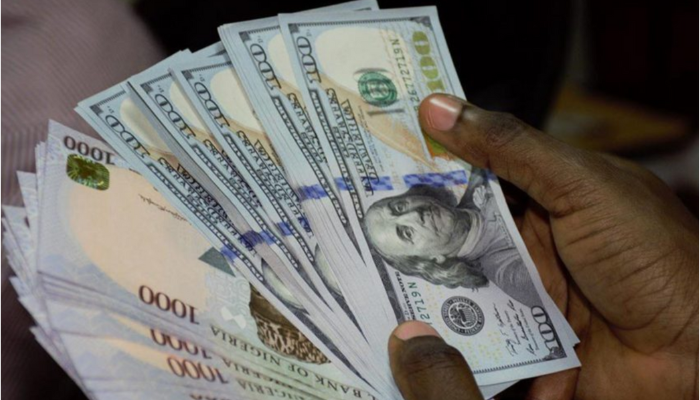The Nigerian Naira has experienced a continued weakening trend, closing at N931.23 against the US Dollar at the official market. The depreciation in the exchange rate underscores the challenges faced by the country’s currency and may have implications for various sectors of the economy.
Key Points Regarding the Naira’s Weakening:
1. **Exchange Rate Dynamics:**
– The exchange rate of N931.23 per US Dollar at the official market signifies a further depreciation of the Naira. This trend may be influenced by various economic factors, including external trade balances, foreign exchange reserves, and market demand.
2. **Impact on Import Costs:**
– A weaker Naira has implications for the cost of imports. As the local currency depreciates, the cost of purchasing goods denominated in foreign currencies, especially the US Dollar, tends to increase. This can contribute to inflationary pressures and impact businesses reliant on imported inputs.

3. **Inflationary Pressures:**
– The continued weakening of the Naira is often associated with inflationary pressures. Imported inflation, driven by higher costs of imported goods and services, can affect the overall price levels in the domestic economy, leading to increased living costs for consumers.
4. **Foreign Exchange Reserves:**
– Central to the Naira’s value is the level of foreign exchange reserves held by the Central Bank of Nigeria (CBN). Declining reserves may limit the CBN’s ability to intervene in the foreign exchange market, potentially allowing market forces to influence the exchange rate.
5. **Economic Stability Concerns:**
– A consistently weak Naira raises concerns about economic stability. Exchange rate stability is crucial for attracting foreign investments, maintaining investor confidence, and ensuring the overall health of the economy. A volatile currency can deter investments and impact economic performance.
6. **Policy Measures and Interventions:**
– The Central Bank of Nigeria may respond to the Naira’s weakening through policy measures and interventions. These could include foreign exchange market interventions, adjustments to monetary policy, or efforts to address underlying economic challenges impacting the currency.
7. **Impact on Businesses and Consumers:**
– Businesses that rely on imported inputs may face increased production costs, potentially affecting pricing strategies and profit margins. Consumers may experience higher prices for imported goods and services, contributing to changes in purchasing power.
8. **Government Fiscal and Monetary Policies:**
– The Naira’s performance is closely linked to the effectiveness of government fiscal policies and the monetary stance of the central bank. Coordinated efforts to address economic imbalances, enhance foreign exchange inflows, and maintain prudent fiscal management are crucial for stabilizing the currency.
In conclusion, the Naira’s continued weakening, closing at N931.23/$1 at the official market, raises important considerations for economic stakeholders. Monitoring the factors influencing the exchange rate and implementing targeted policies are essential for addressing challenges and fostering a more stable economic environment.
Support InfoStride News' Credible Journalism: Only credible journalism can guarantee a fair, accountable and transparent society, including democracy and government. It involves a lot of efforts and money. We need your support. Click here to Donate
